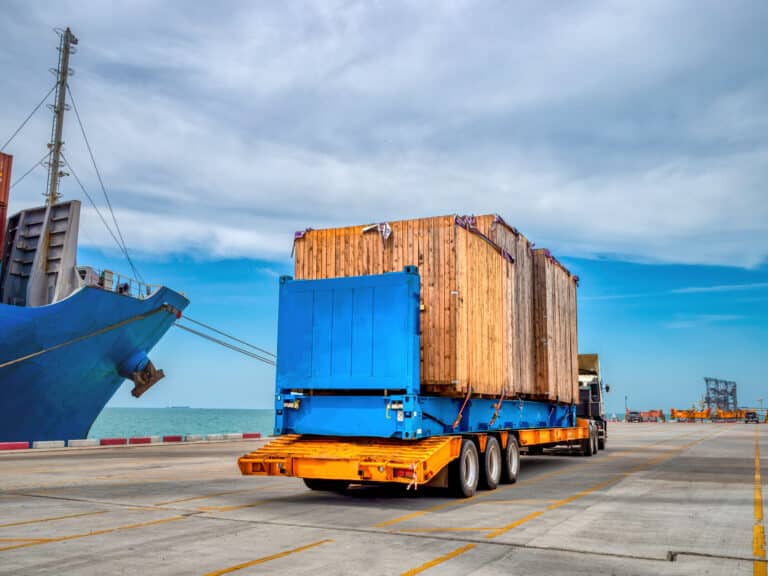GETTING TO KNOW WHAT A FLAT RACK CONTAINER

What Does Flatrack Mean?
A flatrack container is a piece of equipment used to ship products internationally when the cargo cannot fit inside a standard container. A flatrack only has walls or support post on the ends, which allows for the loading of cargo from the top and/or sides.
Size And Dimention Flatrack Container?
Flat rack containers come in two standard sizes: 20 feet and 40 feet. The 20-foot flat rack has dimensions of 20 feet in length, 8 feet in width, and 8 feet 6 inches in height, while the 40-foot flat rack is 40 feet long, 8 feet wide, and 8 feet 6 inches high.
Here's a more detailed breakdown:
20 feet Flat Rack :
- Length:20 feet (6.058 meters)
- Width:8 feet (2.438 meters)
- Height:8 feet 6 inches (2.591 meters)
40 feet Flat Rack :
- Length:40 feet (12.192 meters)
- Width:8 feet (2.438 meters)
- Height:8 feet 6 inches (2.591 meters)
Flat rack containers are designed for transporting oversized or heavy cargo that may not fit into standard shipping containers. They are often used for transporting machinery, pipes, and other oversized items that need to be loaded from the top or sides.
When Do You Use a Flatrack Container?
Flatracks are mostly used when shipping out-of-gauge (OOG) cargo — or cargo that’s too large to fit into standard 20-feett or 40-feet shipping containers.
That said, flatracks can be used to ship cargo that would fit into a container, but happens to be easier to load onto a flatrack. Think of things like bundled pipe.
As we mentioned earlier, flatracks travel over the ocean on a container vessel. Because container vessels are more common, they're easier to find.
To provide more sailing options, you may want to use a flatrack instead of shipping your cargoes using breakbulk shipping or roll-on/roll-off (Ro/Ro) shipping services. That could save you both time and money.
Beyond sailing options, there’s currently a shortage of containers across the world right now, so they’re harder to come by than they usually are. A flatrack can be a good alternative to a container if it isn’t essential that your cargo is completely protected from the elements (more on this later).
That said, many international freight forwarders are using this logic, so it’s creating a ripple effect and leading to fewer available flatracks. In any case, it’s a good idea to keep your options open when shipping overseas.
Efficiency
Because standard containers are more common, many ports can accommodate them in the most efficient way possible. Every major port has at least one container crane — also known as a gantry crane or a ship-to-shore crane.
Those cranes make it easy to load and unload containers from a rail line to a container vessel and vice versa.
If you’re shipping internationally using a flatrack, you may need a special crane to load and unload it. That means added costs to station that crane and hire a crane operator at a port when you need it.
Risk
Consider what we talked about with flexibility. If you can load a container at your shipping facility and unload it at the final destination in that same container, that means your cargo was never transferred to a different piece of equipment. The lack of transferring your cargo reduces the risk of damage and even the risk of it getting into the wrong hands.
Because flatracks only have walls or stability posts on their ends, you risk exposure to the ocean elements. That said, like shipping on a flatbed trailer, your cargo can be tarped. But if you’ve ever shipped using a tarp before, you know it doesn’t seal your cargo completely like a container, or a dry van trailer, would.